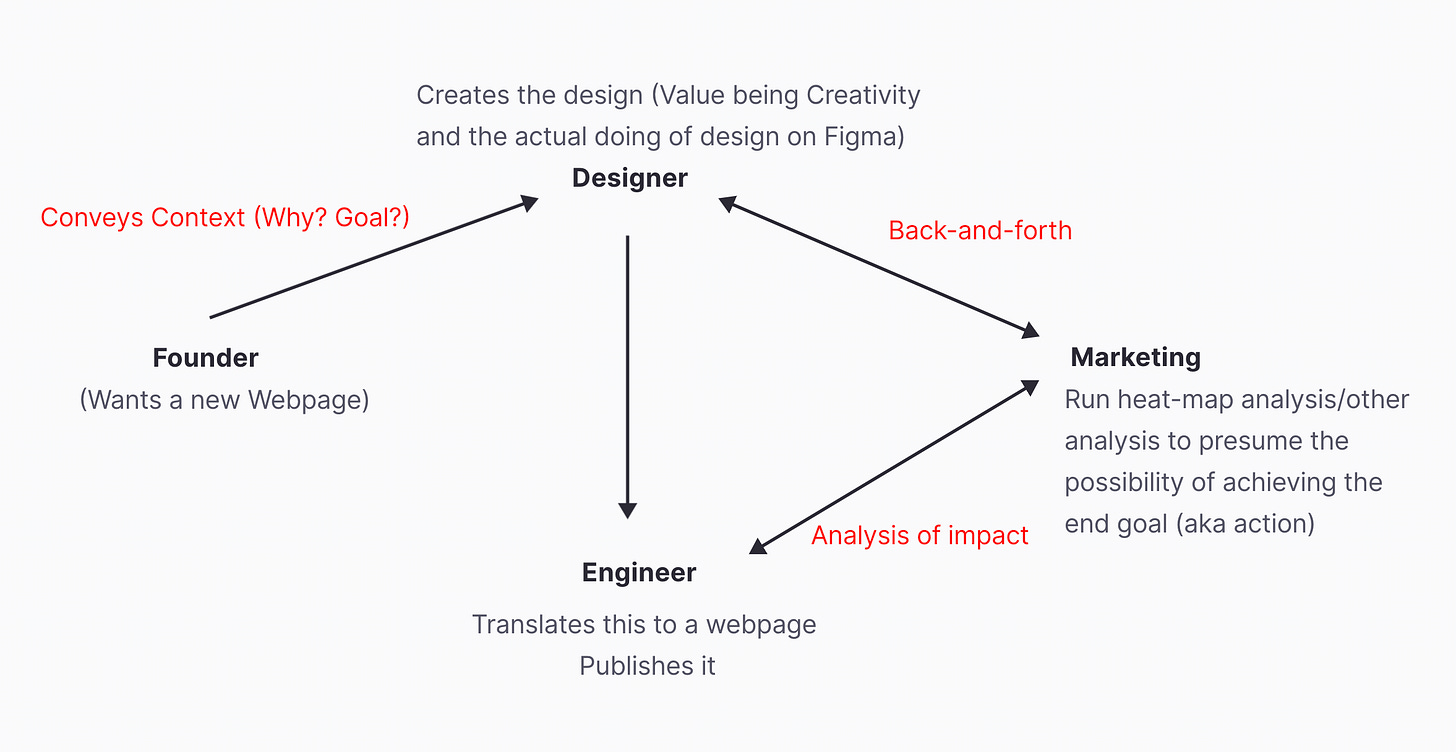Autonomous Web Apps
This is the future of the internet
Static Websites (Display information) > Some-what dynamic websites (Sign up, basic stuff) > Web apps (Do things) > Autonomous Web Apps (Do things, automatically)
Machine Learning is being used to analyze data. Predict and analyze. The most widely used use case of language models is chatbots. So, the easiest way of embedding something AI into a product was to spin up a chatbot (makes sense). Give it a bunch of context on the business (train it well) and have it do Customer Support/FAQs. Then, companies came up with more advanced use cases of Generative AI or Machine learning for the end user. They embedded AI in their workflow. GPT Wrappers or more intricately engraved products in the workflow. E.g., Jasper (for Marketing), Canva embedding image generation AI (pretty decent), or Notion/Github. Ramp’s Vendor Spend data shows that as this landscape evolved, companies are spending more money on these embedded use cases of AI than the models themselves (abstraction and ease). If someone else has figured out the use case better, why spend time doing that?
Now, companies are trying to build dynamic products that change some part of their offering/marketing depending on the user. This will evolve. Products will embed AI more intricately. Models will improve, and understanding of the workflows will get better.
THE NEXT ITERATION
Autonomous Web Apps. Let’s take a product - Figma. Who uses Figma? Freelancers, Businesses, Students, etc. (mainly). Why? To create designs. What is V0 of AI? Chatbot that answers questions on how to use Figma. What is V1? Prompts that can create design mockups (useful). V2? Prompts + context (on me as a designer and my needs) to create really good design mockups (very useful).
Let’s take an example: I am a business that wants to create a design for my webpage to be given to my engineer. What do I care about? Good Design that communicates my business, leading to action (Conversion, buying, booking a demo, etc.).
Current Workflow
Founder/Marketing/Sales needs a new web design
The designer understands context (why the design, what to accomplish, etc.) and creates designs (Value being creativity and the actual doing of design - working with Figma)
Back and forth with marketing/Founder/Sales to achieve the right look
Run heat-map analysis/other analysis to presume the possibility of achieving the end goal (aka action)
Engineering translates this final design into a webpage
The data team measures the impact (Did the action happen?)
Loop starts again
Future
Founder/Marketing/Sales needs a new web design
Figma autonomous agent takes the requirement (why? Goal? Previous context) and spins up multiple multiple designs. The Head of Design/Founder/Marketing/Sales reviews it, makes changes in the web app, or just prompts it
The top 10 designs are sent to Company X’s (Web page analysis) agent, integrated with Figma’s agent, and give a real-time analysis of how the web page would be (e.g., heat maps). Figma’s agent knows the end KPI and optimizes the design to measure those analytics to achieve the best design that would optimize the goal while ensuring creativity
Connects with Webflow’s agent that auto converts and publishes this [Engineering is overseeing this]
Google Analytics agents gets back data to the central agent of the company/Founder/Marketing/Sales/Product on how this webpage performed if it achieved the end KPI (action)
Loop starts again (if wanted by them)
Web apps will become autonomous. They will execute stuff themselves. Mostly, humans will oversee editing if needed. Imagine having a really good prompt and using ChatGPT. It will give you 80% of what you need. If the prompt is really good (context), more like 100%. This will happen across web apps.
WHAT NEEDS TO HAPPEN?
Garbage-in, Garbage-out. Context is key. Most of these products will be shit without proper context. Context is broad. Humans are bad with context. This part has to be automated. There would be a central intelligence system that understands you/your business really well. While it can’t execute individual tasks, it’s good enough to understand which agent would need which context while maintaining security and efficiency.
Making this central intelligence system would enable the creation of more such agents.
This will start with simpler, low-status tasks. This will evolve into more complex tasks. Until eventually these system are so good at performing that you only need to tell what the goal is and their interplay would optimize for the best result and dynamically improve (we are faaaar away from this) but making this central intelligence or growth intelligence system is the start.
Compute also needs to get cheaper. It will get crazy cheap eventually. Wherein it would make sense to deploy an agent instead of hiring someone for low brain-work stuff or automated stuff.



